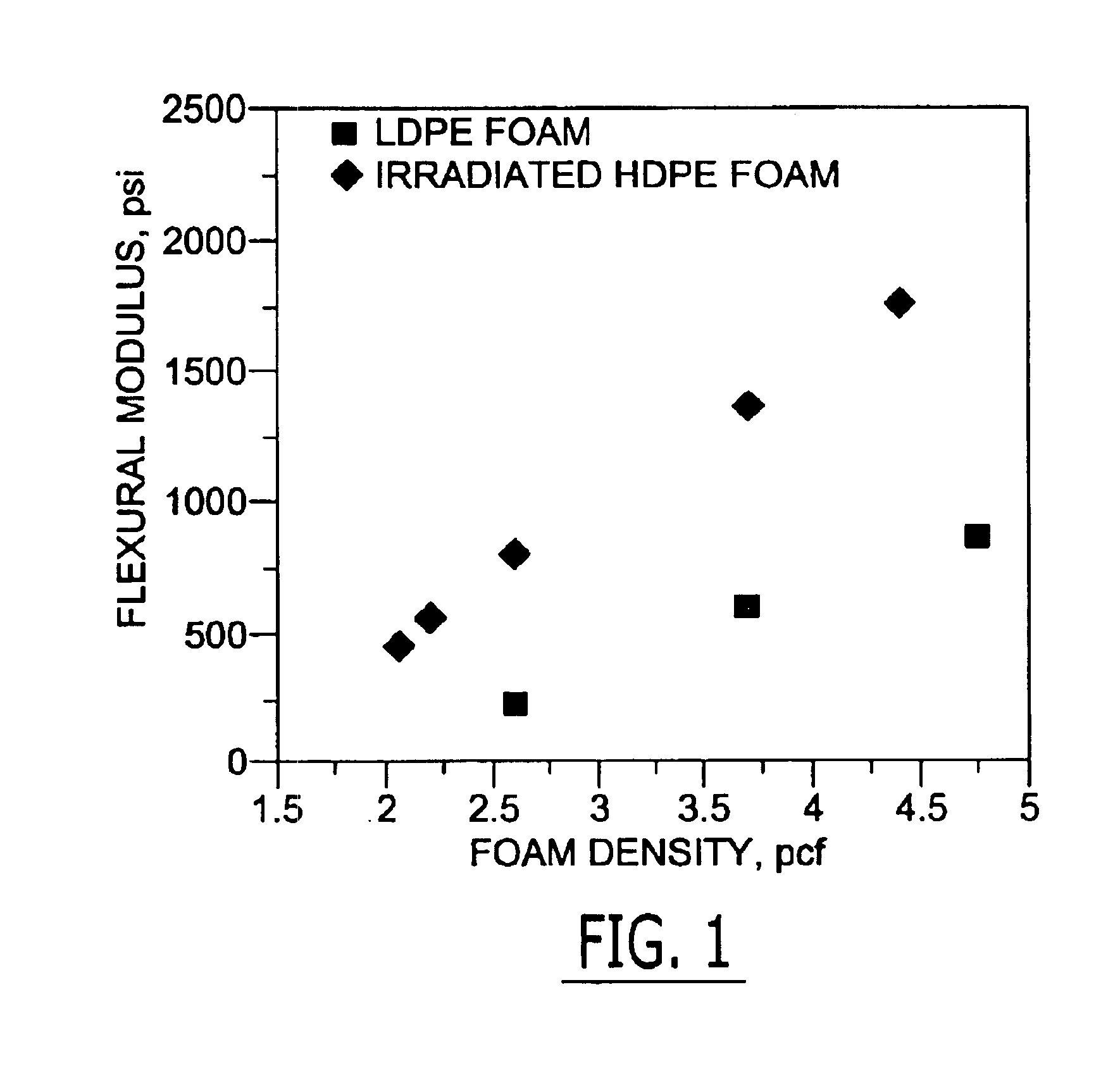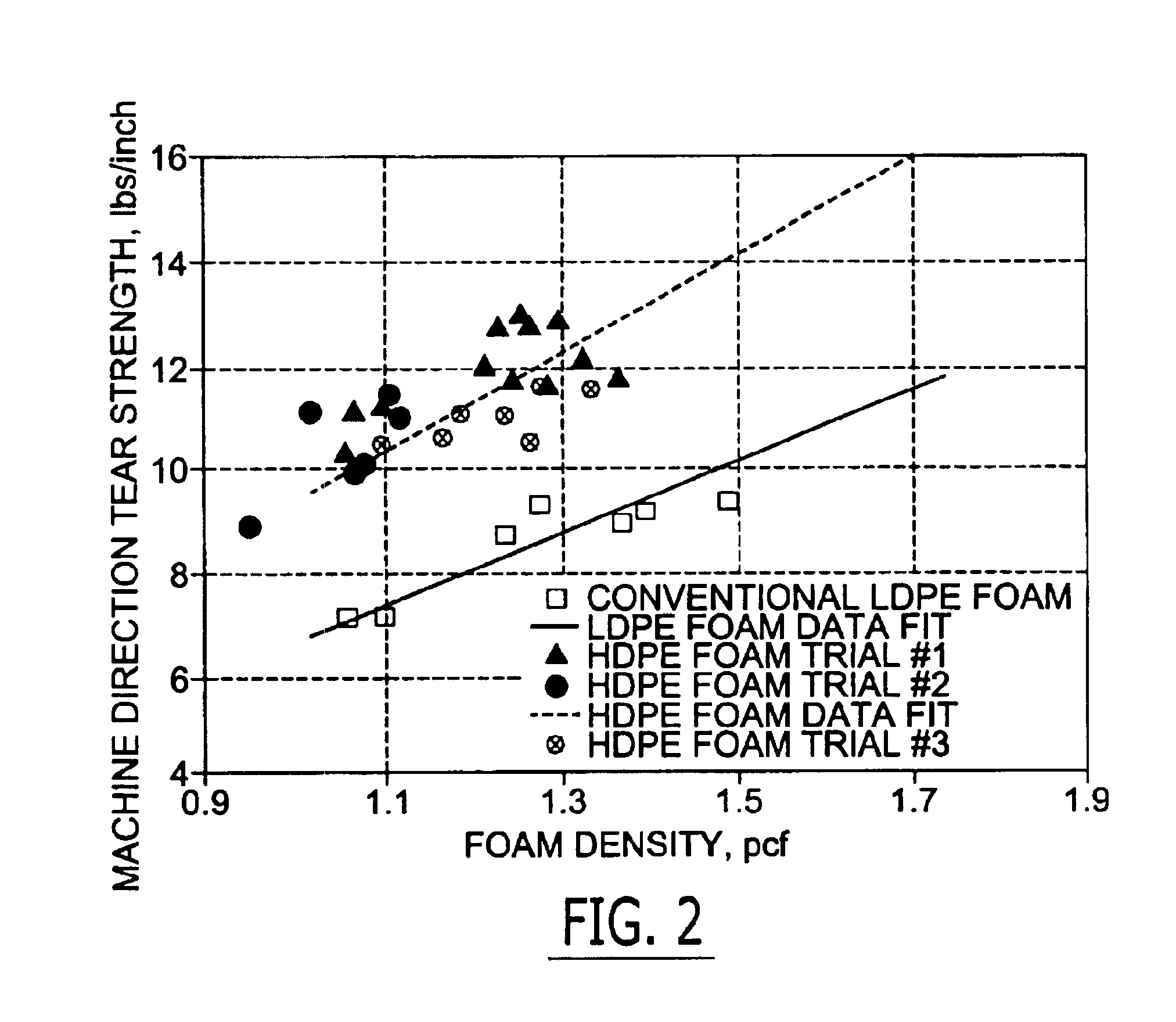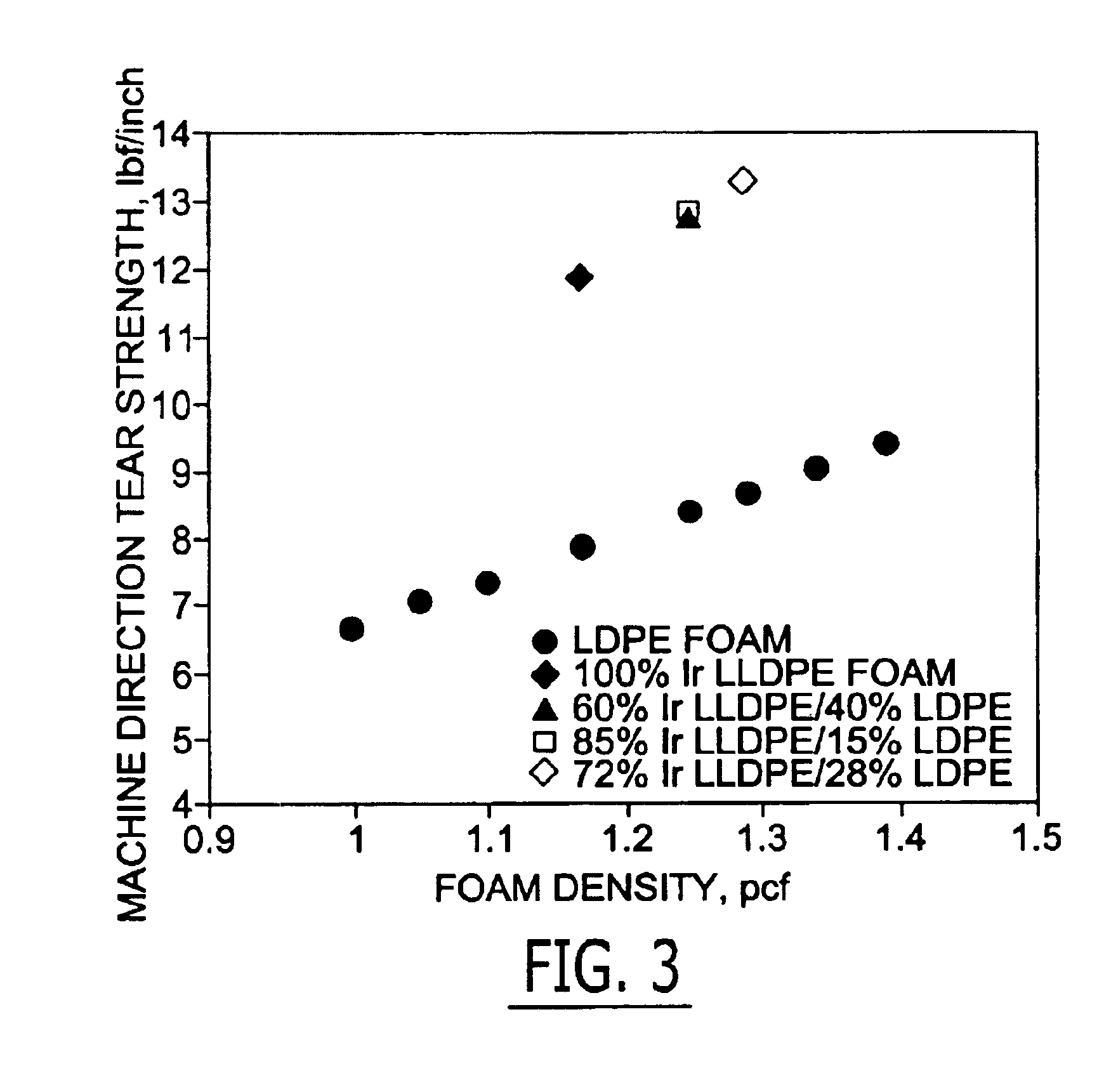Compatible linear and branched ethylenic polymers and foams therefrom
a technology of branched ethylenic polymers and foams, which is applied in the field of expanded cellular products, can solve the problems of increasing the resistance of molten polymer, increasing the difficulty of individual molecules sliding over each other, and poor melt strength of linear resins, so as to improve flexural modulus, tensile strength, temperature resistance, and melt strength. , to achieve the effect of improving performance, simple and cost-effective, and improving flexural modulus
- Summary
- Abstract
- Description
- Claims
- Application Information
AI Technical Summary
Benefits of technology
Problems solved by technology
Method used
Image
Examples
example 1
[0077]Foam sheet was prepared on a tandem extrusion system having a first or primary extruder of 11.4 cm diameter and a second, or secondary, extruder of 15.2 cm diameter. The blowing agent was propane. Talc and fatty acid (glycerol monostearate) were added for control of cell nucleation and dimensional stability. The results comparing 100% LDPE foam and various proportions of resin from shrink film added to the LDPE resin in amounts of from 15 to 50% by weight of the resin are presented in Table 1 below:
[0078]
TABLE 112345LDPE, wt %10085756550Shrink Film wt %015253550Total rate Kg / hr312321300295—Propane Kg / hr35.53941—41Melt T. ° C.108113115114—Die P. Mpa98.48.07.57.8Thickness, mm3.53.22.93.12.6Density, Kg / m31821221822Cells, MD # / cm1210111214TD1111121316Tear Strength lb / in, MD7.411.313914TD1113141317Tensile, lb / in2 MD5253614967TD2836383444Puncture, lb6.37.07.27.27.0
[0079]As is shown from the table above, tear strength, tensile, and puncture resistance of the thin sheet extruded foam ...
example 2
[0080]Foam sheet was prepared on a tandem extrusion system having a first extruder of 8.9 cm diameter and a second extruder of 11.4 cm diameter. The blowing agent was propane. Talc and fatty acid (glycerol monostearate) were added for control of cell nucleation and dimensional stability. The total resin flow rate was 248 kg / hr. The results comparing 100% LDPE foam and various proportions of resin from shrink film added to the LDPE resin in amounts of from 5 to 20% by weight of the resin are presented in Table 2 below.
[0081]
TABLE 21234LDPE wt %100858580Shrink film wt %051520Propane—35.536.838.2Melt T. ° C.110110112113Die P. MPa—5.96.15.5Thickness, mm2.62.57.52.4Density, Kg / m317.617.619.219.2Tear Strength lb / ln, MD5.6788TD10101112
[0082]Table 2 shows comparable or improved tear strength for thin sheet extruded foam prepared from a mixture of LDPE and LLDPE from recycled shrink wrap film when compared to foam from 100% LDPE resin of similar thickness and density.
example 3
[0083]Foam rod was prepared on a 90 mm diameter counter-rotating twin screw extruder with a rod die. The blowing agent was isobutane. The pressure was taken right before the die. The results comparing 100% LDPE foam and various proportions of resin from shrink film added to the LDPE resin are presented in Table 3 below.
[0084]
TABLE 3ShrinkLDPEFilmButaneScrewPressureMelt T.Rod Dia.DensityKg / hrkg / hrkg / hrRPMMPa° C.cmkg / m31.68.2—6.6343.46112.87.628.62.64.83.46.4442.72117.26.832.23.61.46.86.444—120—37.34.54.613.66.4403.88122.26.837.35.47.820.46.5355.17127.26.830.16.37.530.76.5355.92121.16.730.27.*28.639.66.5376.19123.36.133*Early sample, the process became too hot to make a decent sample later.
[0085]Table 3 shows that foam rods of comparable density were prepared from 100% LDPE resin and from LDPE resin having various amounts of LLDPE resin from shrink film admixed therewith.
PUM
| Property | Measurement | Unit |
|---|---|---|
| density | aaaaa | aaaaa |
| density | aaaaa | aaaaa |
| density | aaaaa | aaaaa |
Abstract
Description
Claims
Application Information
 Login to View More
Login to View More - R&D
- Intellectual Property
- Life Sciences
- Materials
- Tech Scout
- Unparalleled Data Quality
- Higher Quality Content
- 60% Fewer Hallucinations
Browse by: Latest US Patents, China's latest patents, Technical Efficacy Thesaurus, Application Domain, Technology Topic, Popular Technical Reports.
© 2025 PatSnap. All rights reserved.Legal|Privacy policy|Modern Slavery Act Transparency Statement|Sitemap|About US| Contact US: help@patsnap.com



